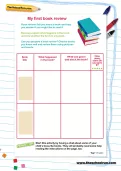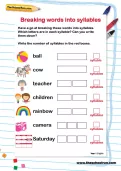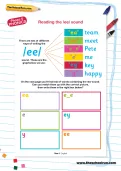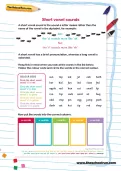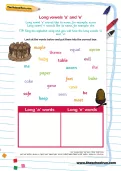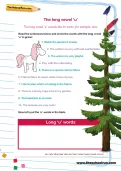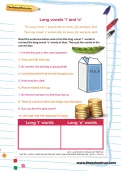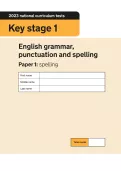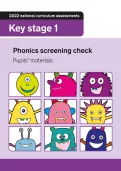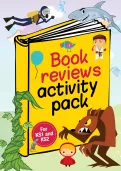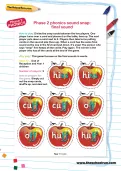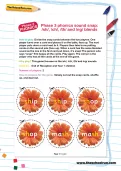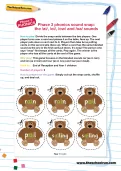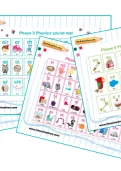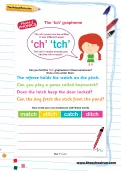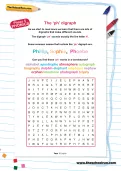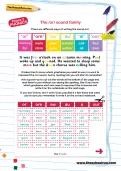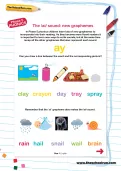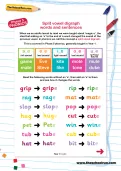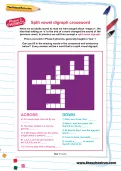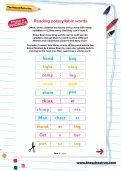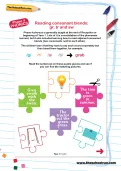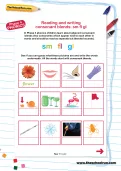A short vowel sound is pronounced for a shorter time than a long vowel sound. For instance, in the word fat, the vowel 'a' is short, but in fate, it's long. Use this worksheet to practise short vowel sounds and consolidate your child's phonics learning at home.
or
Register to add to your saved resources
A long vowel is pronounced for a longer time than a short vowel sound. In the word mat, the vowel 'a' is short, but in mate, it's long. Use this worksheet to practise the long vowel sounds 'a' and 'e' and consolidate your child's phonics learning at home.
or
Register to add to your saved resources
Long vowels are vowel sounds that are pronounced for a longer time than short vowels. In the word cut, the vowel 'i' is short, but in cute, it's long. Use this worksheet to practice the long vowel sounds 'u' and consolidate your child's phonics learning at home.
or
Register to add to your saved resources
Long vowels are vowel sounds that are pronounced for a longer time than short vowels. They can change the meaning of words. In the word bit, the vowel 'i' is short, but in bite, it's a long vowel sound. Use this worksheet to practice long vowel sounds 'i' and 'o' and consolidate your child's phonics learning at home.
or
Register to add to your saved resources
Help your child prepare for the English KS1 SATs, taken at the end of Year 2, with some at-home practice. These complete Y2 SATs past papers from 2023 are the official Department for Education papers used in schools.
or
Register to add to your saved resources
The Y1 Phonics screening check is used to test children's reading and phonics skills and what they've learnt in their first two years at school. Get an idea of what your child will be asked to do in the June test by looking through the official past paper for 2022.
or
Register to add to your saved resources
Help your child explore books and language with TheSchoolRun's Book reviews activity pack, a huge collection of reading comprehension and creative writing resources for Year 1 to Year 6.
or
Register to add to your saved resources
Already a subscriber? to view this content.
This game focuses on the final sounds in words. Simply cut out the snap cards, shuffle up, and deal out.
or
Register to add to your saved resources
Already a subscriber? to view this content.
This game focuses on the /sh/, /ch/, /th/ and /ng/ sounds. Simply cut out the snap cards, shuffle up, and deal out.
or
Register to add to your saved resources
This snap game focuses on the blended sounds /ai/ (as in rain) and /oi/ (as in boil) and /ow/ (as in now) and /oa/ (as in boat). Simply cut out the snap cards, shuffle
up, and deal out.
or
Register to add to your saved resources
Already a subscriber? to view this content.
Use our free phonics phases sound mats to see what sounds your child will be taught when in their phonics learning journey. These mats cover phonics phases 2-5.
or
Register to add to your saved resources
Can you find the ‘tch’ graphemes in these sentences? Draw a line under them then write your own sentences with these words.
or
Register to add to your saved resources
Already a subscriber? to view this content.
Can you find the 'ph' digraphs in this wordsearch?
or
Register to add to your saved resources
Already a subscriber? to view this content.
There are different ways of writing the sound /or/. Ask a grown-up to cut out the words at the bottom of the page and read them to you without you seeing the spelling. See if you know which grapheme each one uses to represent the /or/sound and write it on the notebooks .
or
Register to add to your saved resources
Already a subscriber? to view this content.
Can you draw a line between the word and the corresponding picture. Remember that the ‘ai’ grapheme also makes the /ai/ sound, and so does the split vowel digraph a_e. When you have matched up all the pictures to the words cut them all up into individual words and pictures and mix them up. See if you can match each word to its picture now that you have lots more options.
or
Register to add to your saved resources
Already a subscriber? to view this content.
Read the following words without an ‘e’, then add an ‘e’ to them and see how it changes the words. Then read these sentences and underline the words that have split vowel digraphs. Now can you write your own sentences including split vowel digraph words?
or
Register to add to your saved resources
Already a subscriber? to view this content.
Can you fill in the missing words in the crossword and sentences? Every answer will be a word that is a split vowel digraph.
or
Register to add to your saved resources
Already a subscriber? to view this content.
Can you read these sentences? When you get to a polysyllabic / long word, cover up the second half of the word. Read the first syllable and then uncover the rest of the word to read it.
or
Register to add to your saved resources
Already a subscriber? to view this content.
Read the sentences on these puzzle pieces and see if you can find the matching pictures.
or
Register to add to your saved resources
Already a subscriber? to view this content.
See if you can guess what these pictures are and write the words underneath. All the words start with the consonant blends sm, fl or gl.
or
Register to add to your saved resources
Already a subscriber? to view this content.
